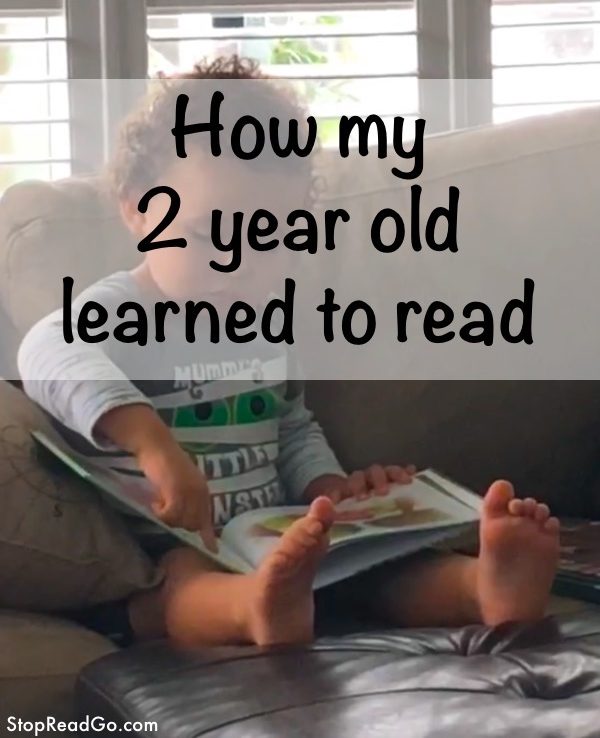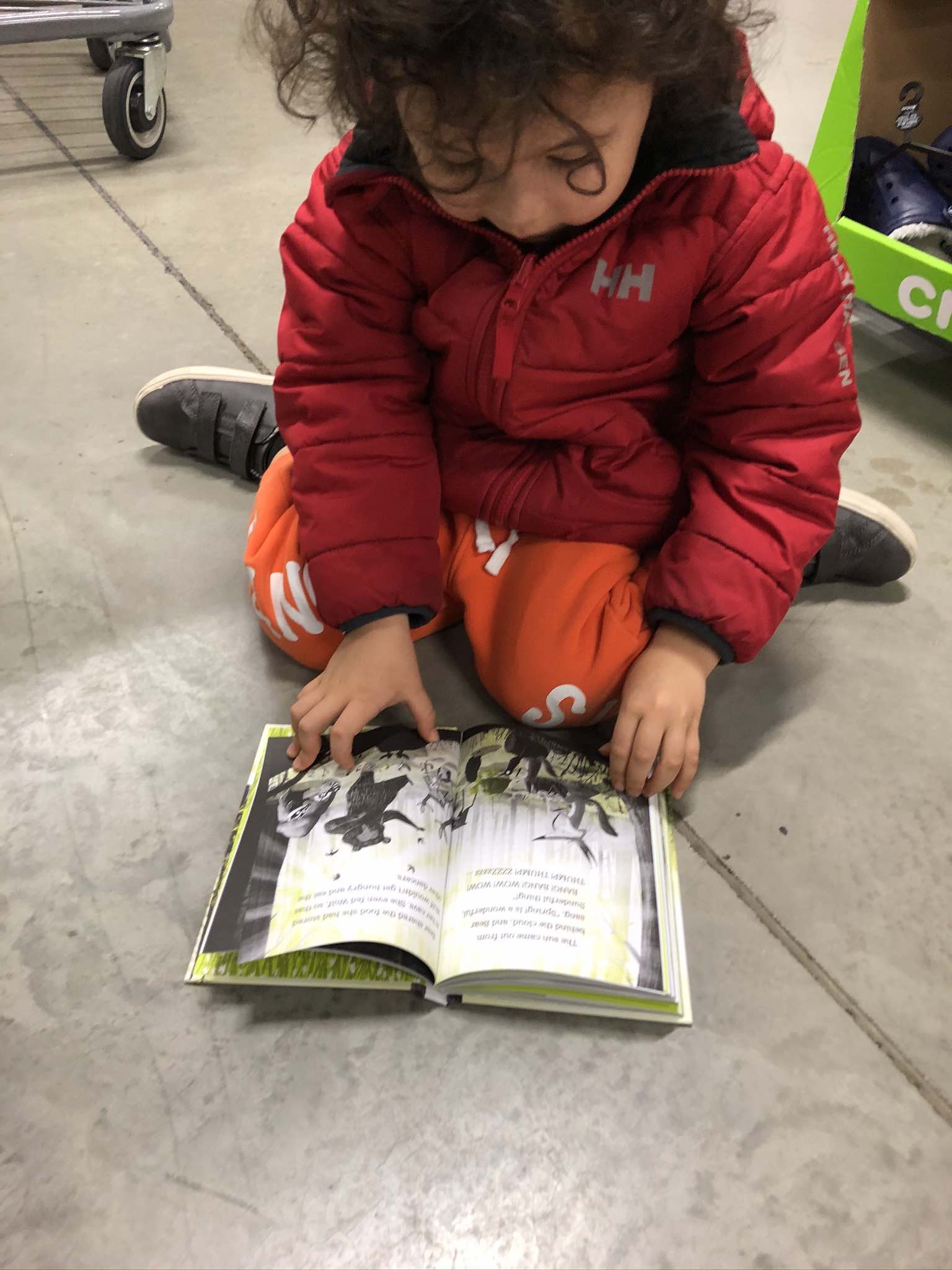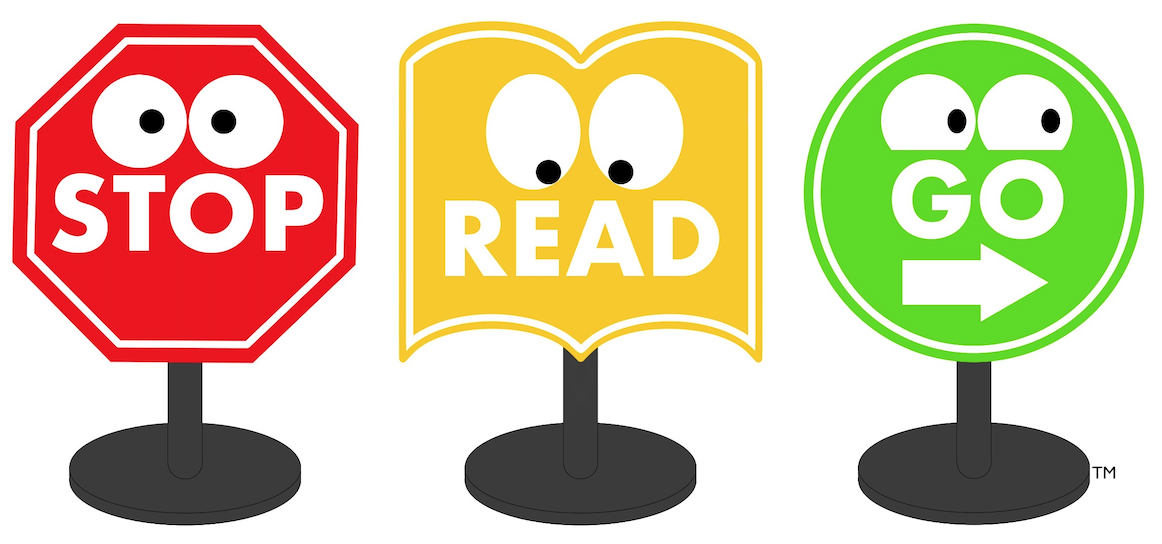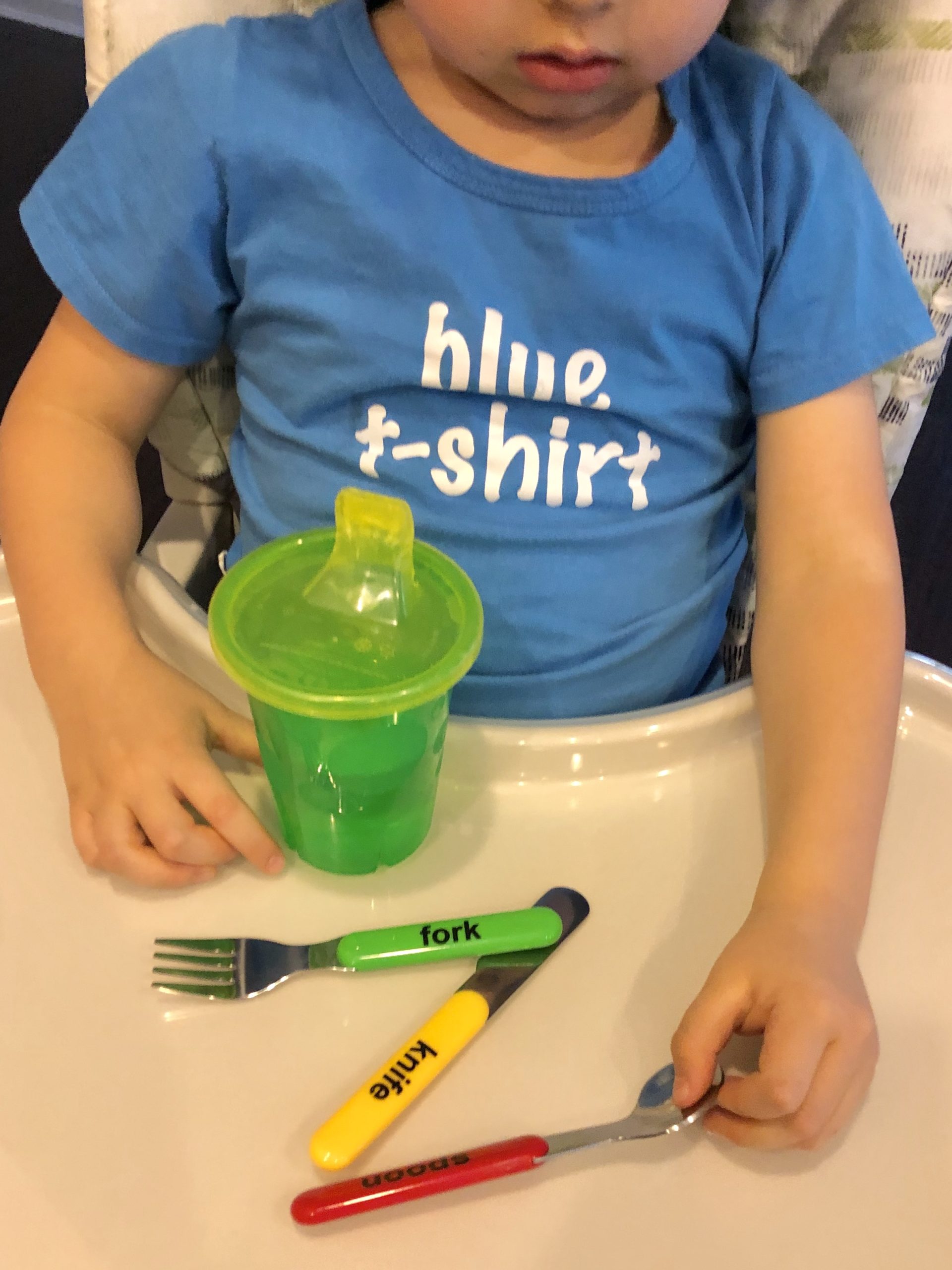I’m just letting you know up front: This post is a bit long, but it is worth your time, especially if you are interested in teaching your child to read at an early age! Feel free to check out the videos of my little guy reading and at the end of this post, you will find some tips to help YOU teach your own child to read!

My 2-year-old (2 years and 4 months to be exact) was able to recognize all the letters of the alphabet and could tell you the sound that each one made. He could read about 5 words at the time. Four months later (2y8m), he was reading about 20-30 words (mostly animals, colors and numbers). And by the time he was 2 years and 10 months old, he could read about 60-80 words, if not more (it was hard to keep track at that point) and he also started writing words like people’s names and animals.
At 3 years and 3 months, he made the leap to reading full sentences including long words and connecting words. He could read Level 1 (beginning reader) books with ease, and would only stop to look at me when he’d encounter a word he has never seen/heard or couldn’t figure out on his own. And at about 3y6m could read Level 2 (Reading with help) books all by himself. At 3y9m, he was reading children encyclopedias and Level 3 (Reading alone) books.

One time, when he was 3y11m (basically, a few weeks before turning 4), we went grocery shopping and as usual he went straight to the book section of the store. While he was looking through the pile of books, I grabbed 2 books (meant for ages 6-8) because I liked the illustrations and my intent was to read them to him when we got home (since they each were about 100 pages long). But as soon as I put them in the shopping cart, he took them and sat down to read them right there on the floor, all by himself! Even though it took him about 15 to 20 mins to read them, we patiently waited until he was done with the second book before continuing with our shopping.
At the beginning, one of the things that made me realize that he was actually reading (not just reciting books we’ve read many times before from memory) was when he picked up a book we’ve never read before and started reading every single page, some included instructions to spot things in the book and others where just descriptions. He would not only read the words and sentences, but fully understand what was being requested of him.

[UPDATE: Talk about exponential growth! He is not even 5 yet and he is already reading books for 10 year-olds, all by himself. He just grabs a book, sits quietly on his bed, on the sofa or in the car and starts reading (without anyone ever forcing him or asking him). His latest reads have been big chapter books (150-200+ pages) with mostly words and just a few images. It takes him about an hour or two to complete. He won’t go to sleep or stop until he’s done with the entire book. ]
Now you wonder, how did he go from knowing just a handful of words at age 2y4m to reading full sentences at age 3y4m and now capable of reading books meant for 6-8 year olds at the age of 4?
Well, with kids, growth is exponential, not just physical, but mental. They are capable of progressing at tremendous speed in comparison to adults, especially from ages 0-5 (which is one big reason why we started early). So really the timing of it does not surprise me as much.
What is amazing is the ability for such a tiny person to be able to read without any formal instruction and waaaaaay before they are supposed to START learning to read (at about 5-7 years of age). There was no need to teach grammar, spelling or phonics rules or the extensive list of exceptions to those same rules!
Just like walking, there was no need to explain or teach how our human legs (bones, muscles, ligaments and all) work together before they can actually walk. Just like talking, there was no need to teach them the letters of the alphabet before they could actually talk. Babies simply learn those things not only because they see everyone around them doing it, but they see it as a need for survival and adaptation. They see people walking and talking every single day. It is simply part of their daily life.
Ok now, let’s get to point. How did my 2-year-old learn to read?
Simple. By making it part of his daily life and daily routines. From the moment he wakes up until he goes to bed, reading is incorporated into everything we do and every place we go. We make it tangible (something he can see, touch, hear and even taste or smell) and intuitive (something that is obvious, self-evident and self-explanatory).
But most importantly, we give meaning and purpose to the act of reading. We don’t read for the sake of learning to read.
We don’t just reserve reading for bedtime or story time. We don’t assume that reading is something only a teacher can teach or something that is done only at school and for school purposes only. We don’t assume he is incapable or incompetent. We don’t separate the act of playing from the act of learning. Similarly, we don’t separate learning from living.
Instead, we read to accomplish a task, to acquire new information, to better understand our world and our surroundings, to exchange our thoughts and ideas, to learn about the past, live in the present, and imagine the future, and last but not least, to have fun! We learn while we play and we learn while we live.
Here is a few of the specific things we did to get to where we are right now, plus some tips for you to help you get started:
-We read books every chance we get (day, afternoon and night) and everywhere we go (restaurant, park, beach, car, doctor’s office, etc).
-I also like to label things around the house that my kid sees or uses every day. For example, I labeled the table with the word “table”, the chair with the word “chair” and the door with the word “door” and so on, and as we go about the day, I point them out and say their names aloud. You will be surprised how fast these words stick in your little one’s mind. Tip: You can buy these labels at my SHOP. It has all the words you need to get started labeling your house so your little one can learn to read and recognize them!
-We go to the library almost every week, and rent a stack of children’s books. Tip: Don’t rent just 1 or 2 books, rent as much as the library allows you to take out (limit could be up to 50 books!).
-We keep books spread all over the house (bedroom, bathroom, kitchen, living room, etc). Tip: I place them with the front cover facing forward as opposed to placing them all bunched together in a bookshelf. This makes it enticing and they’ll grab it as soon as they see it.
-I read each and every word and POINT to it with my finger as we go along. Tip: Yes, even if your child is looking at the pictures of the book instead of the words. Make it a habit, and eventually, your child will follow along with you, hearing the sound of the word and correlating the written version of the word to that sound. Note: I’ve seen it countless times: A parent reading a book to their kid (which is great!) but they don’t point to each word as they say it. What a missed opportunity!
-Another tip: If there is a word that is illustrated, point to that word and immediately point to the picture that represents that word. For example, if there is a “rooster” point to the word and then point to the drawing of the rooster. This creates a clear link between the written word, the sound of the word and the image of the word.
– I like to pause for effect. After reading the same books over and over again, I like to pretend to forget a word or pause for a few seconds before reading the next or last word on a sentence. This will hopefully trigger your child to fill in the blank.
Tip: For example, if the sentence goes like this: “one little …monkey was …jumping on the …bed. One fell off and …bumped his head. Mama called the doctor and the …doctor said, no more …monkeys …jumping on the …bed”. Pause before each big word, like “monkey”, “jumping”, “bed”, “bumped”, “doctor”, and so on. By doing this, you encourage your little one to look at the word that you are having trouble with and try to help you out. When you first start doing this, though, try to only pause before the very last word only. Then, when he gets the idea, you can experiment by pausing on the other big words within the sentence.
-We replaced the screen with books. Literally: We uninstalled the TV in the living room and replaced it with a bookshelf. No TV in his room either. Tip: Time is precious. Why waste time passively watching TV if they could be actively reading a book or playing instead?
-In the car, instead of putting a movie or a game on a tablet/phone, we always carry a box full of books in the back seat, and refresh them periodically.
-We tried not to teach him or expose him to the Alphabet Song for the longest time. But because it is everywhere, it was a little hard to avoid! I wrote a separate post about this decision here. But the short answer is that it just causes unnecessary confusion and could actually delay the process of learning to read. We did however introduced the sounds of the letters early on, when he was about 1 1/2 years old.
One last tip: If you want your kids to be interested in books, they need to see you reading books, too.
Feel free to check out my other BLOG posts and SHOP for more tips, ideas and inspiration.
I really hope you find these tips useful to help you teach your child to read. But remember, simply learning to read is not the end goal here. The goal is to introduce them to the amazing world of information that reading makes available to them.
Because learning to read is not the destination, but simply a means of transportation!
P.S.: In case you were wondering, this post was not written to gain bragging points or to show off my kid and put other kids down simply because they didn’t learn to read at such an “early” age. Some people might brand him as gifted or exceptional. But even though I do think he is amazing, I believe he is not the exception, but the rule. Children are much more capable than most people think. Instead of assuming they are incapable, we need to enable them to achieve their greatest potential. Don’t waste their time, especially in the first five years of their lives. That doesn’t mean, you need to sign them up for classes and rigor. Simply incorporate learning into their everyday lives, while they eat, while they brush their teeth, while they get dressed, or while you go for a walk or a ride together, etc.


